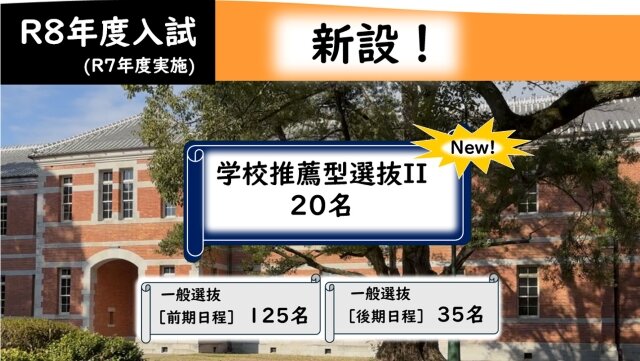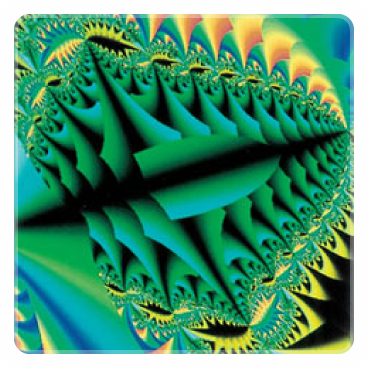重要なお知らせ
- 2025.03.28 令和7年度理学部新入生ガイダンス詳細(お知らせ)
- 2025.03.28 令和7年度理学部入部式及び新入生ガイダンスについて(お知らせ)
- 2021.04.13 理学部時間外施設利用申請システムについて
- すべて
- お知らせ
- 研究
- 入試
- イベント
-
2025.10.20
お知らせ
(公募期間延長)熊本⼤学⼤学院先端科学研究部基礎科学部門数学分野 教授の公募について
(Extension of Call for Applications)Academic Job Announcement for a Professor Position (Mathematics) -
2025.10.10
お知らせ
熊本大学大学院先端科学研究部基礎科学部門生物科学分野 教授または准教授の公募について
Academic Job Announcement: Professor or Associate Professor Position (Biological science) -
2025.09.26
お知らせ
熊本大学大学院先端科学研究部基礎科学部門化学分野テニュアトラック准教授候補者の公募について
Academic Job Announcement for a Tenure-Track Associate Professor Position at the field of Chemistry in the Faculty of Advance Science and Technology -
2025.08.28
お知らせ
熊本大学大学院先端科学研究部基礎科学部門生物科学分野 教授または准教授(女性限定)の公募について
Academic Job Announcement: Professor or Associate Professor Position (Female Applicants Only,Biological science) -
2025.08.05
お知らせ
熊本大学大学院先端科学研究部基礎科学部門数学分野 教授の公募について
Academic Job Announcement for a Professor Position (Mathematics) - 2025.07.29 研究 ハサミムシにだって"好み"がある! 〜 花資源の利用様式を解明 〜 杉浦直人准教授 研究グループ
- 2025.07.29 研究 植物の枝のかたちづくりの仕組みの一端を解明 〜植物の4 次元表現型解析でミオシンXI の新たな機能に迫る〜 檜垣匠教授 研究グループ
- 2025.07.29 研究 生薬成分グリチルリチン酸によって誘導される新たな植物細胞死モデル系の確立 檜垣匠教授 研究グループ
- 2025.07.29 研究 見落としていた細胞の変化に気づく、新しい観察のかたち 〜深層学習による画像復元で細胞質分裂のはじまりを明らかに〜 檜垣匠教授 研究グループ
-
2025.07.01
お知らせ
熊本大学大学院先端科学研究部基礎科学部門数学分野 准教授の公募について
Academic Job Announcement for an Associate Professor Position (Mathematics)
-
2025.10.20
お知らせ
(公募期間延長)熊本⼤学⼤学院先端科学研究部基礎科学部門数学分野 教授の公募について
(Extension of Call for Applications)Academic Job Announcement for a Professor Position (Mathematics) -
2025.10.10
お知らせ
熊本大学大学院先端科学研究部基礎科学部門生物科学分野 教授または准教授の公募について
Academic Job Announcement: Professor or Associate Professor Position (Biological science) -
2025.09.26
お知らせ
熊本大学大学院先端科学研究部基礎科学部門化学分野テニュアトラック准教授候補者の公募について
Academic Job Announcement for a Tenure-Track Associate Professor Position at the field of Chemistry in the Faculty of Advance Science and Technology -
2025.08.28
お知らせ
熊本大学大学院先端科学研究部基礎科学部門生物科学分野 教授または准教授(女性限定)の公募について
Academic Job Announcement: Professor or Associate Professor Position (Female Applicants Only,Biological science) -
2025.08.05
お知らせ
熊本大学大学院先端科学研究部基礎科学部門数学分野 教授の公募について
Academic Job Announcement for a Professor Position (Mathematics) -
2025.07.01
お知らせ
熊本大学大学院先端科学研究部基礎科学部門数学分野 准教授の公募について
Academic Job Announcement for an Associate Professor Position (Mathematics) -
2025.07.01
お知らせ
熊本大学大学院先端科学研究部基礎科学部門数学分野 教授(女性限定)の公募について
Academic Job Announcement for a Professor Position (Women Only, Mathematics) -
2025.05.26
お知らせ
熊本大学大学院先端科学研究部基礎科学部門数学分野 准教授(女性限定)の公募について
Academic Job Announcement for an Associate Professor Position (Women Only, Mathematics) - 2025.03.28 お知らせ 令和7年度理学部新入生ガイダンス詳細(お知らせ)
- 2025.03.28 お知らせ 令和7年度理学部入部式及び新入生ガイダンスについて(お知らせ)
- 2025.07.29 研究 ハサミムシにだって"好み"がある! 〜 花資源の利用様式を解明 〜 杉浦直人准教授 研究グループ
- 2025.07.29 研究 植物の枝のかたちづくりの仕組みの一端を解明 〜植物の4 次元表現型解析でミオシンXI の新たな機能に迫る〜 檜垣匠教授 研究グループ
- 2025.07.29 研究 生薬成分グリチルリチン酸によって誘導される新たな植物細胞死モデル系の確立 檜垣匠教授 研究グループ
- 2025.07.29 研究 見落としていた細胞の変化に気づく、新しい観察のかたち 〜深層学習による画像復元で細胞質分裂のはじまりを明らかに〜 檜垣匠教授 研究グループ
- 2025.01.31 研究 AI で植物細胞構造をバーチャルに染色し、高精度に解析する新手法を確立 檜垣匠教授 研究グループ
- 2025.01.09 研究 水素発生と半導体応用を兼ね備えた二次元半導体ナノリボンを実現 MoS2ナノリボンで 高い触媒活性とトランジスタ動作を実証 原正大准教授 研究グループ
- 2024.12.18 研究 深層学習を用いた細胞骨格の高精度・高効率な密度解析法を確立 檜垣匠教授 研究グループ
- 2024.12.18 研究 ゲノム編集によって遺伝子の働きを部分的に抑える新しい技術の実証実験に成功 石田喬志准教授 研究グループ
-
2024.11.29
研究
熊本大学大学院先端科学研究部基礎科学部門数学分野教授の公募について
Academic Job Announcement for a Professor Position(Mathematics) - 2024.09.19 研究 植物の「内と外」を最初に作る仕組みを発見 〜細胞はかたちを少し変えることで分裂の方向を決めている〜 檜垣匠教授 研究グループ
- 2023.07.27 入試 オープンキャンパス2023が開催されます
- 2021.08.06 入試 8月5日(木)までにバーチャルオープンキャンパスへ申込をされた方へ
- 2021.07.26 入試 オープンキャンパス2021について
- 2021.06.02 入試 令和4年4月入学大学院生募集ポスターを掲載しました
- 2020.08.04 イベント 第九回紫熊祭の中止について















